EVF
Latest
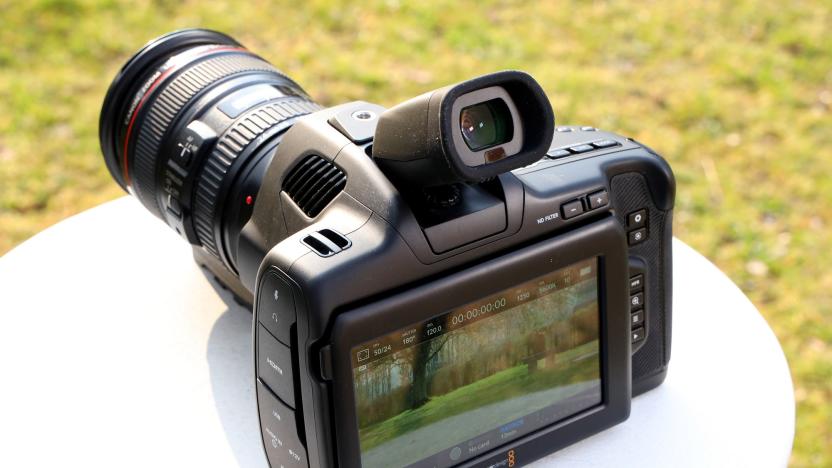
Blackmagic’s BMPCC 6K Pro is a more practical cinema camera
Hands-on with Blackmagic Design's BMPCC 6K pro, updated with A viewfinder, brighter display, built-in ND filters and more useful battery setup.

Nikon's Coolpix P950 has an improved EVF, 4K and 83x zoom power
Nikon has unveiled the Coolpix P950, a refresh of its popular P900 superzoom. While it doesn't quite have the incredible 3,000mm equivalent reach of the P1000, it nevertheless delivers 83x zoom power equal to 2,000mm on 35mm cameras. That's enough to capture a jet plane crossing the moon or the gleam in a bird's eye for a long distance away.
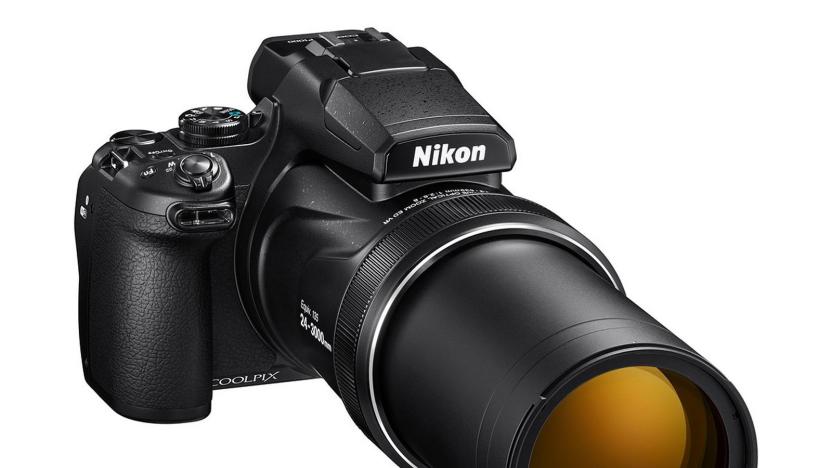
Nikon's P1000 takes the superzoom crown with a beastly 125X lens
Nikon already holds the superzoom title with the 2,000mm (83X zoom) equivalent P900, but it hasn't been sitting on its haunches. It just unveiled the CoolPix P1000 with a 24-3,000mm f/2.8-8 lens (35mm equivalent), offering an astonishing zoom range of 125X. That will let you capture closeups of birds from a long, long distance, or even the moon, for a fairly reasonable price of $1,000.
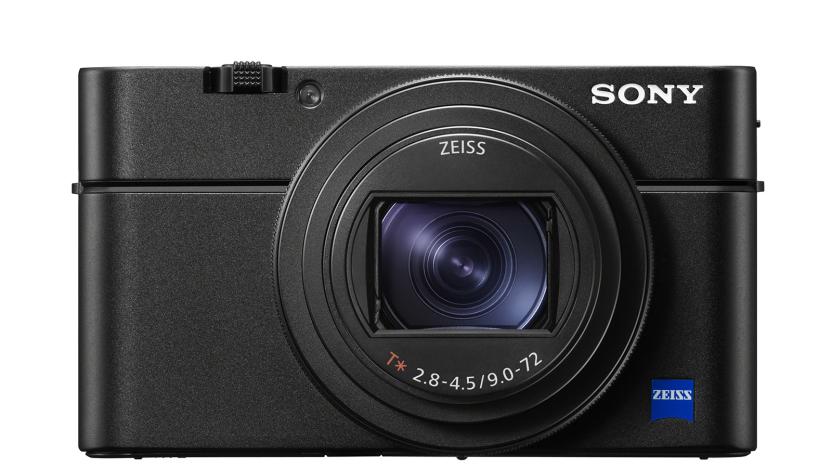
Sony's RX100 VI compact hides a ridiculous zoom lens
Sony has unveiled the RX100 VI 20.1-megapixel premium compact camera with a new telephoto lens that will make it a lot more interesting for travel photography. Rather than the Zeiss Vario-Sonnar 24-70mm equivalent f/1.8-2.8 T lens of the last model, the Mark VI packs a hugely longer, optically stabilized 24-200 f/2.8-4.5 T mm 8.3X zoom lens. That's over a stop slower than previous f/1.8-2.8 T lens, but the extra range will be worth it for many folks, and Sony has boosted other specs to make up for it.
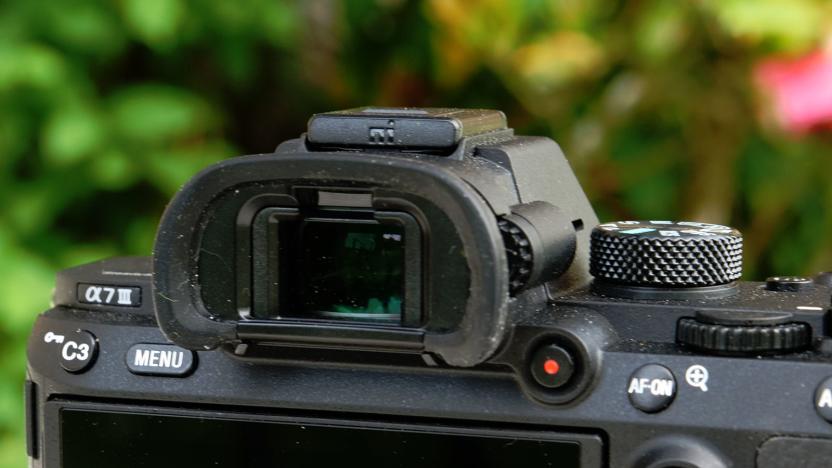
Sony's new mirrorless camera EVF is 60 percent sharper
Sony has unveiled an OLED electronic viewfinder (EVF) display with a resolution of 5.6 million dots and a record 6.3 micrometer dot pitch. That's a significant boost over the 3.69 million dot EVF on its flagship A9 and A7R III mirrorless cameras. It also boasts a refresh rate of 240 fps, double that of the previous model. Once it starts shipping later this year, you can expect to see mirrorless cameras with much sharper and more responsive displays, further closing the gap on DSLRs with optical viewfinders.
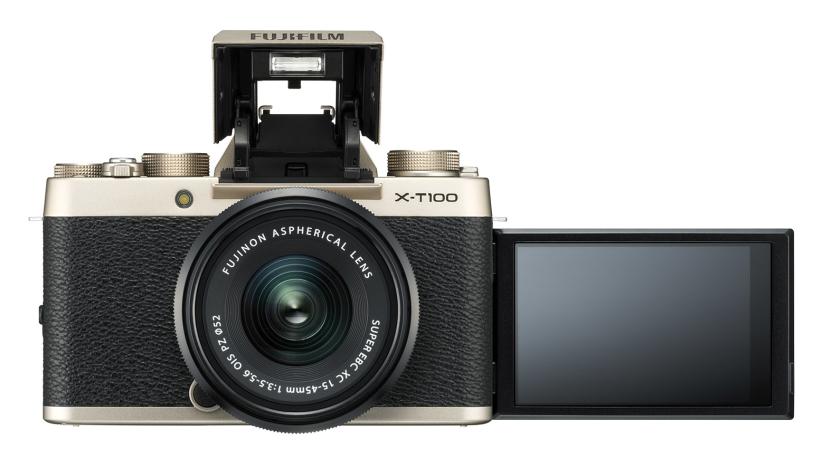
Fujifilm's entry-level X-T100 brings classic style for $600
Fujifilm has unveiled the X-T100, an interesting mirrorless camera that's quite similar, spec-wise, to the entry-level X-A5, but looks more like the X-T20. It's one of the few inexpensive mirrorless cameras out there with an electronic viewfinder, great for serious photographers on a budget. Unfortunately, it's not as great for video, as Fujifilm crippled the 4K by limiting it to 15 fps.
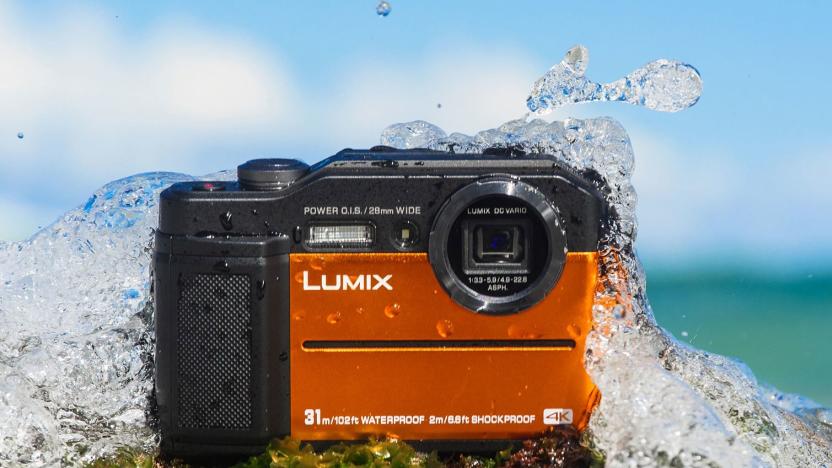
Panasonic's rugged 4K FT7 compact has a built-in EVF
Panasonic has unveiled one of the first, if not the first ruggedized compact cameras with a built-in electronic viewfinder (EVF), the Lumix FT7 (the TS7 outside of North America). It packs a fairly high-resolution 20.4-megapixel back-side illuminated CMOS sensor and a reasonably fast and long f/3.3-5.9, 28-128mm equivalent (4.6X) lens. Most importantly for action fans, it can take a fall from 6.6 feet and is waterproof down to 102 feet.
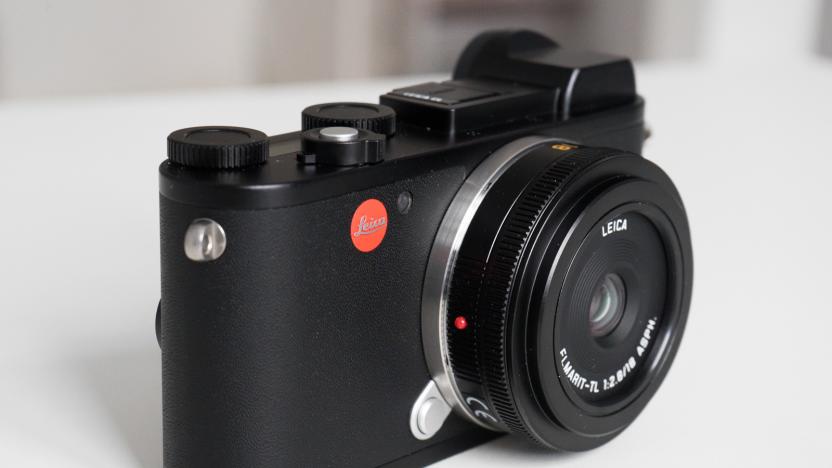
Leica's CL gives an iconic design the modern tech it deserves
Up until recently, Leica built lovely, expensive cameras that no-one ever called "state-of-the-art." The TL2, however, recently marked a change in direction. Not only was it relatively cheap for a Leica at $1,950, but it was endowed with modern features like 4K video. It's pushing that idea further with the CL, its new $2,795 flagship 24.2-megapixel APS-C mirrorless that looks and feels more like an old-school Leica, thanks to a new body and manual dials. At the same time, it's got the tech you'd expect in a modern camera, including an all-new electronic viewfinder.

Canon quietly launches the M10 mirrorless camera
Just a few weeks after Canon launched its first decent mirrorless camera, the EOS M3, it has revealed a tiny, cheaper sibling, the EOS M10. The camera arrived in Canon's store with no press release or price, but judging by the specs, it's essentially a stripped-down version of the M3. It sports a lightweight, more basic body, and is equipped with an 18-megapixel instead of a 24.2-megapixel sensor. It's pretty darn similar otherwise, however: it has the same 49-point AF, 25,600 max (expanded) ISO, 3-inch, 1.04 million dot touchscreen and shoots 1080/30p video.

Sony Alpha A99 poses for someone else's camera, no optical viewfinder in sight
Technical details of Sony's rumored Alpha A99 have been overflowing. The actual camera, however, has been elusive until now. A press photo just spotted on Xitek (and passed along to Sony Alpha Rumors) is believed to be authentic and speaks volumes about Sony's pro camera strategy: as shown, there's no obvious space for an optical viewfinder, hinting that the company's full-frame shooter is going with an OLED-based electronic eyepiece like that of its crop-frame A77 precursor. The image doesn't show much more than that and a conspicuous orange ring to remind us that we're gazing upon an Alpha, but it's tough to ignore that more compact (and hopefully lighter) body. Whatever the cosmetics are like, rumors now assert that the 24.3-megapixel, translucent-mirrored A99's early September release has been locked down to September 12th; if that's true, it may give photographers as much reason to be happy that day as phone buyers.

Sony NEX-6 spotted in the wild, electronic viewfinder and mode dial in tow
We've had furtive glances of Sony's upcoming NEX-6 before, but only in the very clinical space of a government test lab. Apparently, no mere agency can confine it: photography workshop director Vincent Kang has posted a photo of the pre-release mirrorless camera on Weibo for all to see. Posing next to 24mm and 50mm lenses, the NEX-6 looks to be very much the in-between camera we suspected it was, without as much dedicated control as the NEX-7 but still carrying an electronic viewfinder, a pop-up flash and a dedicated function key near the shutter release. The dedicated mode dial is also more conspicuous -- there's no question that Sony wants to free up controls on the back for the future camera's more experienced target audience. Between the new design and the already known inclusion of WiFi, it's looking as though the NEX-6 may hit the sweet spot for shooters who want more control than the NEX-5R without sacrificing all its newer features. We just need to wait for official launch details to make it all real.

Olympus OM-D E-M5 Micro Four Thirds camera review
More Info Olympus OM-D E-M5 Micro Four Thirds camera preview (video) Cameras, Olympus OM-D E-M5 five-axis sensor-shift image stabilization hands-on (video) Olympus OM-D E-M5 Micro Four Thirds camera to ship on March 31st? (update: now April) Stepping across the great DSLR divide into the land of mirrorless cameras always requires some compromise. Focusing speed, image quality, lens compatibility and battery life are frequent casualties, but for everyone except professional shooters, the size and cost benefits of swapping a full-grown beast for a compact ILC surely help soften the blow. The latest Micro Four Thirds model from Olympus, the OM-D E-M5, adds functionality that expand that list of betterments even further, allowing more versatility than larger DSLRs have to offer. These perks include a water-resistant design, for starters, along with a nifty lens that offers macro shooting and both manual- and powered-zoom in one compact package. One area where the 16-megapixel E-M5 does match the footprint of its full-size brethren is in price: you'll drop a cool grand for the body alone, while the 12-50mm f/3.5-6.3 lens kit will bump that tag up another $300. Make no mistake, the E-M5 is a fantastic camera, but $1,300 is mighty steep for any mirrorless model, especially one with a Micro Four Thirds sensor. This, however, is no ordinary MFT camera. As the first model in Olympus's OM-D line -- taking design cues from the company's popular line of OM film cameras -- the E-M5 is in a class of its own, at least as far as Olympus's portfolio is concerned. Besides physical appearance, perhaps, the most notable selling point is its focus speed: press the shutter release, and your subject comes into clarity with rapid-fire precision, whether you're shooting in bright sunlight or a dark restaurant. But though the E-M5 has already received accolades for its powerful focusing, you might be wondering how the whole package performs. Meet us past the break to find out.

RED 9-inch touchscreen, OLED EVF and Meizler Module eyes-on (video)
Deep-pocketed RED owners take heed. The company just demoed some pretty nifty module updates, including an OLED EVF, a new 9-inch touchscreen and the crown jewel Meizler Module, which brings to the table such features as wireless 1080p transmission, a wireless timecode transceiver and full wireless lens control -- we're particularly taken with that last feature, which effectively enables remote-controlled follow focus, aperture and zoom control. The new 9-inch will also come in handy with wireless control, making it easier to verify sharpness and exposure. It features the same touch functionality of its smaller sibling, giving you full control of the camera. The display will likely draw some attention when mounted on an EPIC, which is noticeably smaller than the LCD itself, but once you toss on a lens and power pack, the rig looks slightly better proportioned. That's the good news. The bad news is the price -- you're looking at a cool $13,000 for that wireless module, which is named after its designer, assistant camera Steven Meizler, while the Bomb OLED EVF can be had as an upgrade for $1,200 (if you're willing to trade in your LCD version), or $3,900 if you plan to buy it outright. You can head over to the Red Store to pick that device up today, though you'll need to hang tight for the Meizler and 9-inch LCD, both of which are expected to launch later this year. You'll get an up-close look at all the new gear in the gallery below, and you'll also find a video overview with RED's Ted Schilowitz when you venture past the break.

MicroOLED viewfinder delivers 5.4 megapixels in 0.61-inch monochrome display
Photographers who've spent years looking through the window of a high-end optical viewfinder may never find an electronic version that fully satisfies them. But this new MicroOLED EVF may get us closer than ever to an acceptable digital replacement for the TTL OVF, which will never find a home in modern-day compacts and mirrorless ILCs. Developed with military and medical-industry heads-up displays and digital camera viewfinders in mind, the new microdispay is able to deliver a 5.4 megapixel (2560 x 2048) monochrome image, or 1.3 megapixels in full 16-million color -- all in a 0.61-inch diagonal panel. The display boasts a top contrast ratio of 100,000:1, 96-percent uniformity and 0.2 watts of power consumption. There's no word yet on when the new tech will start popping up in enterprise devices and digital cameras, or how much of a premium it'll carry for electronics manufacturers, but it looks like we're closer than ever to having an excellent electronic alternative to the optical viewfinder. Jump past the break for the full PR from MicroOLED.

Leica rehashes Panasonic's Lumix Fz150 as the V-LUX 3, because 'image' matters
Leave it to Leica to rebrand a recent Panasonic camera, tack on its iconic red dot and then likely charge a premium. Such is the case with its "new" V-Lux 3 digital superzoom, which is essentially its take on the venerable Lumix FZ150 we spent some hands-on time with back in August. To recap, this shooter features a 12.1 megapixel CMOS sensor, Leica's DC Vario-Elmarit 4.5 - 108 mm f/2.8 - 5.2 ASPH lens (that's 25 - 600mm for you full-frame buffs), 1080p AVC HD video recording at up to 60fps with stereo sound and an a77-like 12fps continuous burst mode (albeit using manual focus). On back, you'll find an articulating 3-inch LCD loaded with a 460K pixel resolution and a 0.2-inch EVF, both of which feature nearly 100% frame coverage. While there's no word price, you can surely expect the V-Lux 3 to cost a few Benjamins more than its Lumix counterpart when it hits shelves in January. Hey, at least you can say it's a Leica, right?

Sony's 0.7-inch OLED microdisplay packs 720p resolution, has head-mounted displays in mind (update)
Say howdy to Sony's ECX332A! Excited? We'll, if you're into shooting DSLR video using electronic viewfinders, head-mounted displays, you might be. This new OLED microdisplay measures in it a mere 0.7-inches, managing an HD resolution of 1280 x 720. As understood by OLED-Info, it features "the same white OLED and color-filters architecture" as the ECX331A (far left), which is the 0.5-inch, 1024 × 768 XGA variant Sony's implemented inside of the EVFs found on its NEX-5N and A77 cameras, among others. Notably, it'll likely be a pleasure to look through with a brightness level rated at 200 cd/m2 and a peppy response time of 0.01ms. There's no word on what future Sony shooters we can expect to find the ECX332A in, but if you're curious for more details -- and well-versed in kana -- hit that source link below. Update: As it turns out, this isn't exactly a new EVF-purposed display -- it's apparently the microdisplay being used twice over inside of Sony's HMZ-T1 head-mounted 3D visor. You'll find further clarification at the "more coverage" links below. [Thanks, Aaron]

Sony A77 reviewed: A 24.3 megapixel game-changer?
It's been a long time coming, but the patience has paid off with Sony's A77 finally getting its first pro review. Sure, the $1,400 cost of entry (body only) will weigh heavily on even the most enthusiastic cameraman conscious. But, what's a few hundred dollars when it comes to a camera that Popular Photography says has "radically changed the world of DSLRs"? It seems only the rival Canon 7D holds a candle to this would-be king, besting Sony's latest when it comes to noise and performance at higher ISOs. However, the A77 wins on its all-around charm, with a 24.3 megapixel Exmor APS-C sensor, articulated LCD screen, world-first OLED EVF and impressive video-shooting chops. Video-wise, that top dollar gets you a high-end performance of 60fps at 1920 x 1080 with the fast phase-detection auto-focus we've also seen on its predecessors, the Sony A55 and A33. Popular Photography does add a single caveat to the largely very positive conclusion: video enthusiasts should probably hold tight to see what Canon and Nikon counter with. Especially if you're in possession of multiple lenses. Aside from that, what's stopping you? Dig in to all the nitty-gritty details below, and we'd advise cutting down on those impulse eBay purchases -- this magnesium-alloyed beauty will certainly make a financial dent when it lands, if not a physical one.

Sony Alpha A77 hands-on preview (video)
When it comes to cameras, digital SLRs are a breed all their own. Many DSLR owners don't upgrade their bodies often -- if at all -- and even fewer would consider a switch to a competing camera system, especially after investing in a handful of high-end lenses. Manufacturers need to push innovation even further to target this segment of the market -- when some cameras cost thousands of dollars and already offer excellent performance, simply releasing a body with more megapixels and HD shooting options won't prompt photographers to pull out their credit cards. With its massive 24.3 megapixel sensor and high-res OLED electronic viewfinder, however, Sony's $1,399 Alpha A77 may just be the DSLR upgrade you've been waiting for. We spent a few days with a pre-production A77 paired with Sony's brand new 16-50mm f/2.8 lens ($1,999 in an A77 kit), and were very impressed with what will undoubtedly be a worthy successor to the well-received A700. Jump past the break for our initial impressions, along with plenty of still photo and HD video samples.%Gallery-131349%

Fujifilm's X100 hybrid viewfinder demoed on video, gets us all sorts of excited
Imagine a retro-styled, Micro Four Thirds-sized compact camera with an optical viewfinder. Now, imagine that same camera having a switch that throws all sorts of useful data into your line of sight. That camera is Fujifilm's Finepix X100, and that viewfinder is real. Back at Photokina, the mockup we ran into didn't have a functioning viewfinder, but with just two months until the $1,000 beaut is released into the wilds of America, it's not too shocking that our brethren over at Engadget Spanish managed to come across a (mostly) functional one at CES last week. Eager to show the world exactly what a hybrid viewfinder looks like when being flipped on and off, they shoved a camera up against the OVF and toggled the new mechanism -- it's downright luscious, and it's waiting for you in the video just past the break.

Fujifilm explains how its X100 hybrid viewfinder works, we nod and pretend to understand
If you just tried to tell us the FinePix X100 was a bog standard digital camera, we'd still probably pay any price for those amazing retro looks, but Fujifilm has more in mind. Specifically, the X100 harbors an all-new viewfinder setup, that can switch between a full-on optical view (something that's currently impossible in similarly sized Micro Four Thirds cameras), and an electronic viewfinder. The optical mode also includes overlaid shooting data, which isn't typical for a straight compact viewfinder (since it's looking through its own lens, not the camera's main lens). You'll have to read Fujifilm's full-on explanation to really know what's going on here -- it gets a little technical -- but basically there's a half mirror prism that lets the mini LCD project info on top of the optical image that's coming through to your eye, but that half mirror prism becomes a straight up mirror when the viewfinder's front lens is blocked, allowing for a full electronic image of the actual image being captured by the lens to bounce to your eye. See? That wasn't so difficult. We don't know what we were so worried about.






